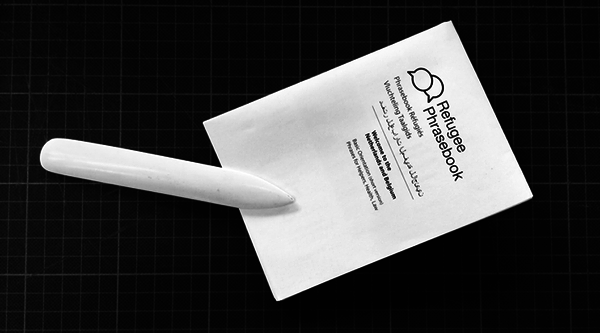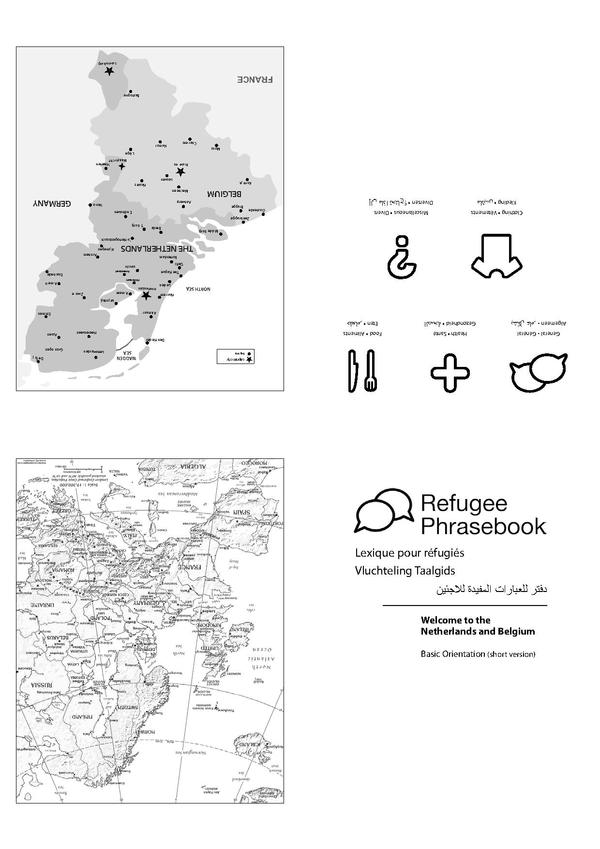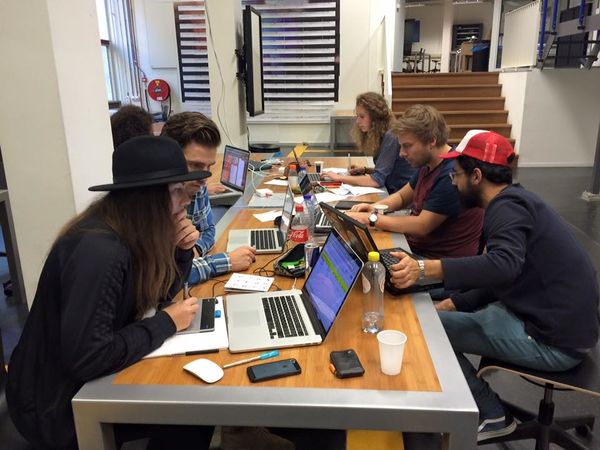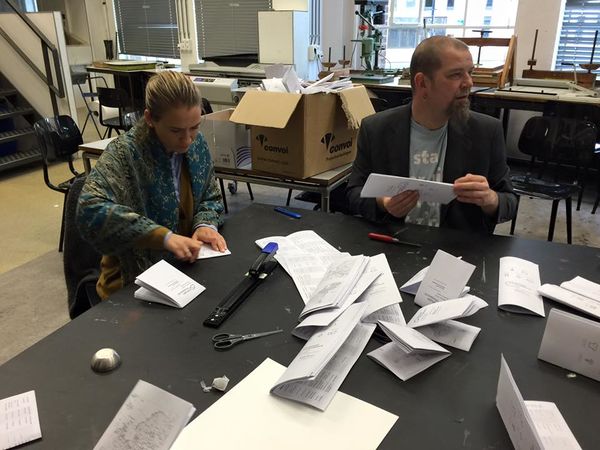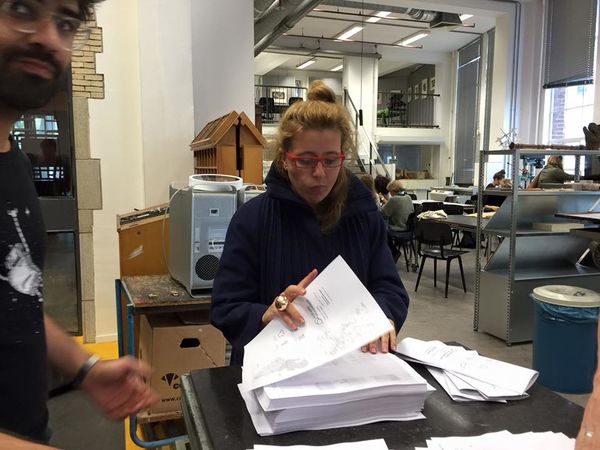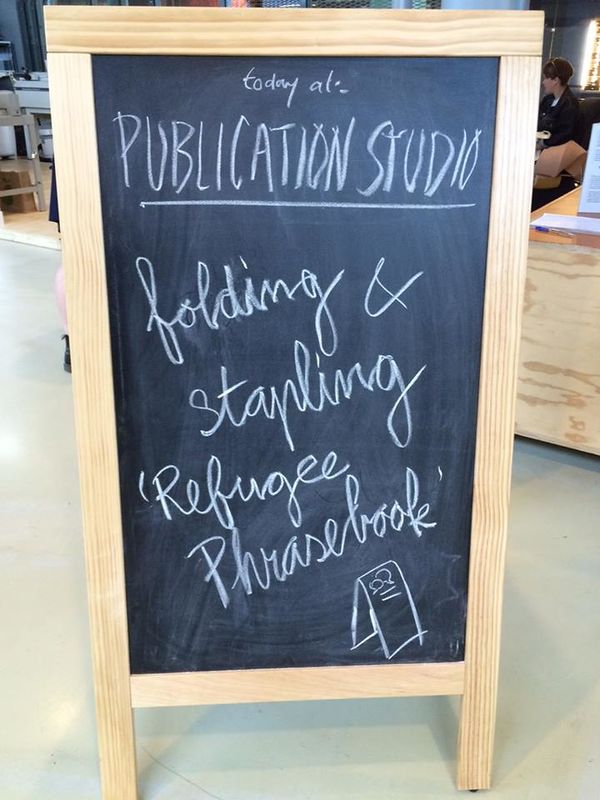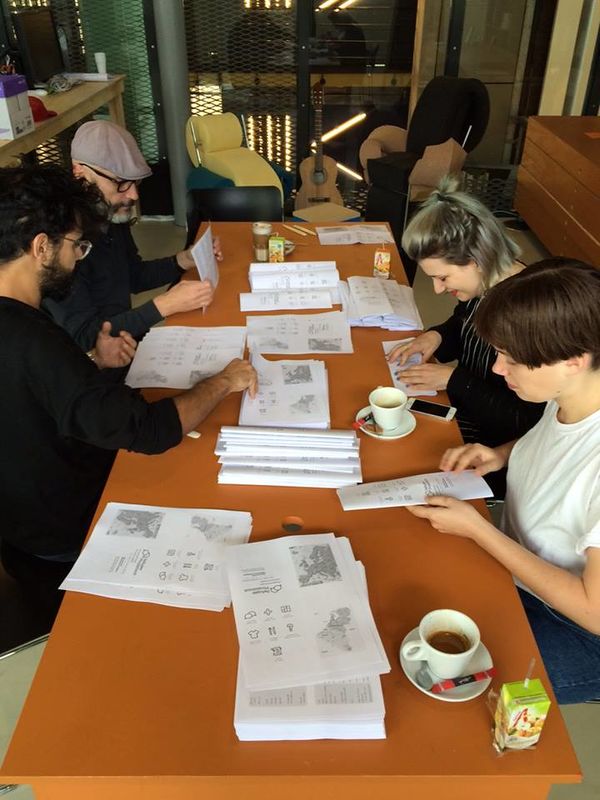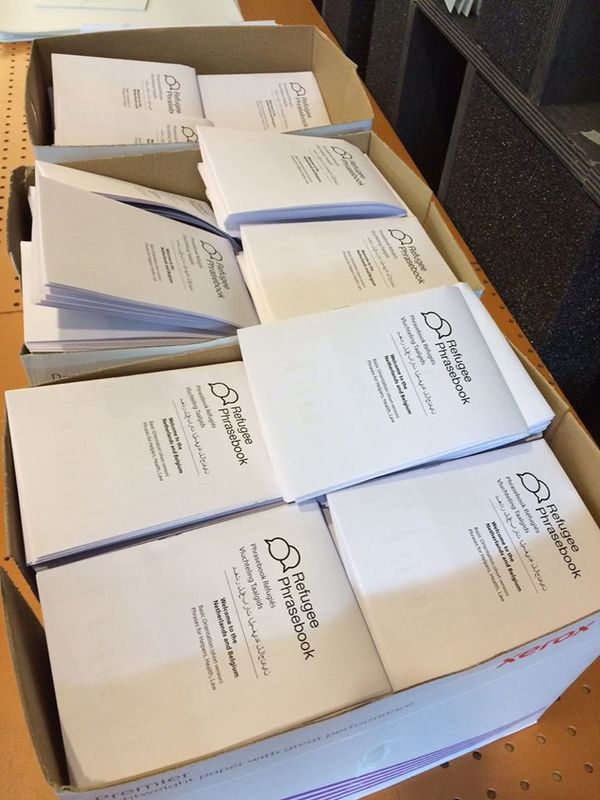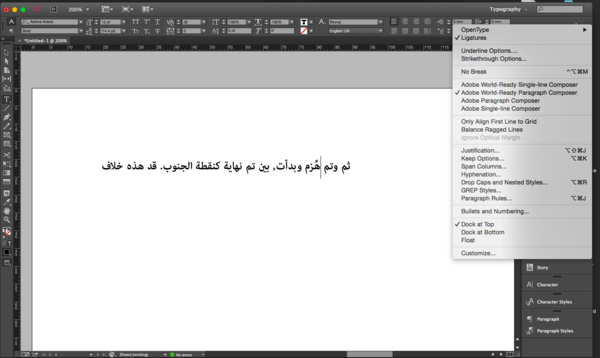Publisher:Refugee Phrasebook
Welcome to Benelux PDF
http://publicationstation.wdka.hro.nl/phrasebook/RPB-basic-Benelux.pdf
https://en.wikibooks.org/wiki/Refugee_Phrasebook#Netherlands.2C_Belgium
Who collaborated
- Willem de Kooning Academy students and tutors
- Piet Zwart Institute students and tutors
- Publication Station (Willem de Kooning Academy) staff
- Publication Studio Rotterdam staff
- many volunteers
collaboration involved
- compiling a new version
- creating illustrations
- layout design
- printing
- folding
- distribution
How did students get involved?
Just like the tutors or volunteers from the outside, by receiving an email about the project, asking if anyone would be interested in collaborating. And there were a few of these, for different moments in the process and modes of collaborations - designing the phrasebook, folding it, or distributing. But it all happened very organically. It students really deciding what they could or could not do.
After the team has gathered the phrases, agreed on essential languages, the format of the phrasebook, and it's structure, the design team - that consisted mostly of 2nd year BA Graphic Design students - organized itself to complete the layout. That involved having some doing illustrations, others making the layout, and someone assembling it together. Tutors worked with them, like equals, mostly fine tuning some rough edges.
Folding was the most fun part where many friends from the outside came to give a hang. We folded 2000 booklets so far.
And currently are in the process of distributing them, but the lack of information of shelters is making it difficult.
Issues
no Git
Unfamiliarity within art school with to collaborative distributed tools work - such as Git.
Text layout - enemy of hybrid publishing
Lack of text-layout software capable of working in a hybrid publishing mode, where:
- the designed layout will incorporate changes performed in the source document
- design decision can be applied to other editions of the phrasebook, like a template. (We wanted that our work could also used by others. We didn't succeed in that.)
The alternative to using text-layout software such as inDesign would be to web-to-print, like many of the Phrasebook were produced. Many issues, such as fonts (see below) or the possible of re-usability would have been solved, but others, such as the impositions that made the Benelux version into a booklet and not a collection of sheets, wouldn't have been possible. Yet Web-to-print seems to be the more promising text layout method for hybrid publishing projects.
Fonts
Finding a font that covered the many alphabets covered in the Benelux version of the Phrasebook was easy.
Supposedly Arial covers a lot of the languages present on the Unicode table. In fact it seemed to cover Latin languages, Arabic, Bangla, Urdu and Dari fine. However when it came to Kurdish some of its glyphs/code points where not rendered. The open-source font [Dejavu-Sans http://dejavu-fonts.org/wiki/Main_Page] saved us there
Unfamiliarity with non-Latin alphabets
The unfamiliarity with non-Latin alphabets and the different steps that need to be taken where laying text that is written right to left resulted in a small disaster, where Arabic had lost its ligatures and was placed in mirror form.
One student from the team and the Phrasebook community helped finding the method to correctly pasting Arabic in inDesign. The process had to be redone and this time before any thing we had an Lebanese student proof-reading
